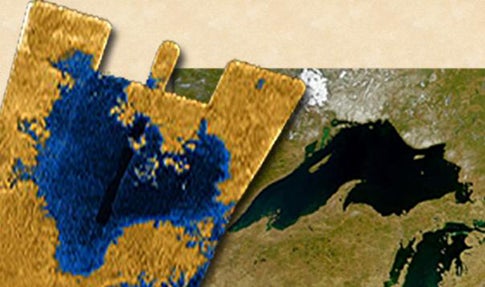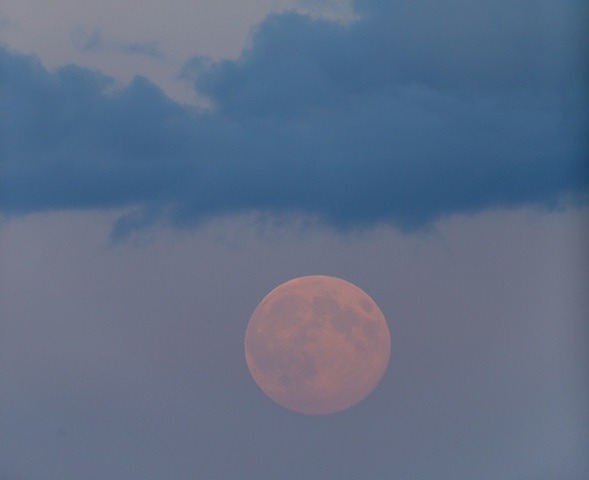To North Americans, the Great Lakes earn their moniker through sheer size and volume. If you could magically transport these bodies of water to Saturn’s moon Titan, however, they wouldn’t seem quite so grand. Planetary scientists have just discovered a lake on Titan that’s more than 20 percent larger than Lake Superior, the biggest Great Lake.
The lake — or sea, as many scientists are calling it — turned up in a radar image acquired by the Cassini spacecraft during its February 22 pass over the moon’s north pole. The image is a narrow swath whose long dimension spans a third of Titan’s circumference. It starts at a latitude of 32° south, seen at the image’s far left. It then heads north, passing through dune fields interspersed with bright mounds. At the point where the spacecraft came closest to the surface (where the strip appears narrowest), the terrain is dark but with bright outcrops.
Continuing farther north, the image reveals channels and canyon-like structures — the first signs of liquids in action. Next come depressions, which become more numerous and more frequently filled with dark material. Scientists interpret these smooth, dark regions to be lakes of liquid methane, liquid ethane, or a combination of the two. In the frigid conditions on Titan, methane and ethane should act much as water does on Earth, constantly being recycled between the surface and atmosphere.
The image’s final section, which lies closest to the moon’s north pole, contains the biggest lakes. The new lake champion lies at the far right. This behemoth covers at least 39,000 square miles (100,000 square kilometers), significantly more than Lake Superior’s 32,000 square miles (82,000 square km). The lake’s size is even more impressive when you consider Titan — the second-largest moon in the solar system — isn’t anywhere near as big as Earth. Titan’s sea covers at least 0.12 percent of the moon’s surface. The Black Sea, Earth’s largest inland body of water, covers 0.085 percent of our planet’s surface.
The image certainly impressed planetary scientists gathered this week in Houston for the annual Lunar and Planetary Science Conference. Cassini scientists brought along a print of the radar swath that spanned 16 feet (5 meters). At that size, other details become clear. Dozens of lakes pop into view, as does a river more than 120 miles (200 km) long that feeds one of the larger lakes.
Radar team members will retarget their instrument during a May flyby so they can get a better look at another interesting region turned up by Cassini’s cameras. It may be another sea, perhaps even larger than the one just discovered. Only time will tell whether Titan will be the second world with its own set of Great Lakes.










